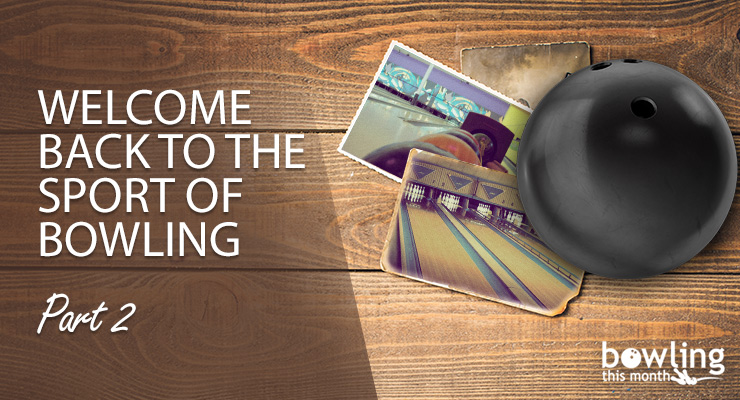Welcome back to Part 2 of, well, the Welcome Back to the Sport of Bowling series (click here for Part 1). I started this series because I have had so many bowlers in the last couple of years contact me for lessons because they are coming back to the sport of bowling after a long absence. Many of these bowlers have been away for 20 years or more and are bewildered by the number of changes in the sport since they last bowled.
Our sport has changed so much that you don’t have to be away for 20 years to get lost in the changes. Heck, even five years will get you pretty far behind the curve. And, to be honest, lots of bowlers stay lost even if they’ve never taken a break. This is especially true for bowlers who are making the transition from wide open league oil patterns to more challenging sport oil patterns.
Good news for the sport
Many younger bowlers may not know this, but there are several times more former competitive bowlers than there are current competitive bowlers. The fact that so many are coming back is good news indeed for bowling itself.
I also feel that the youth side of bowling is expanding. A record number of more than 3,300 youth bowlers made the trek to the Junior Gold Championships this year in Indianapolis, and I am proud to report that all of their games were competed on sport oil patterns. I also believe that the number colleges actually offering scholarship money for bowling is growing, as well. I know of at least two colleges right now that are adding bowling teams. They are Belmont Abbey College in Belmont, NC (near Charlotte), headed up by Coach Clyde Ferguson, and Reinhardt University in Waleska, GA (near Atlanta), headed up by Coach Stoney Baker. If you would like to learn more about either of these new programs, get in touch with me and I will pass along the contact information.
Making use of your new equipment
Last time, I suggested that returning bowlers should buy some new equipment because their old balls simply won’t work anymore and, besides, they likely don’t fit anymore anyway. In the old days, we used to think that stretched spans, lots of reverse pitch in the thumbhole, and very loose thumbholes were the formula for success. Like any sport, though, we have learned better and more effective ways of doing things, and it turns out that just the opposite of each of those things is better.
I am not going to spend a lot of time on bowling balls, as the amount of information available about them is nearly endless on the internet. I don’t suggest you buy six bowling balls to make your big comeback to the sport; two or three will ...
This article is only available to Bowling This Month subscribers. Click below to get instant access to this article and all of our other premium instructional content.
Subscribe to Bowling This Month
Already a Bowling This Month subscriber? Click here to log in.
